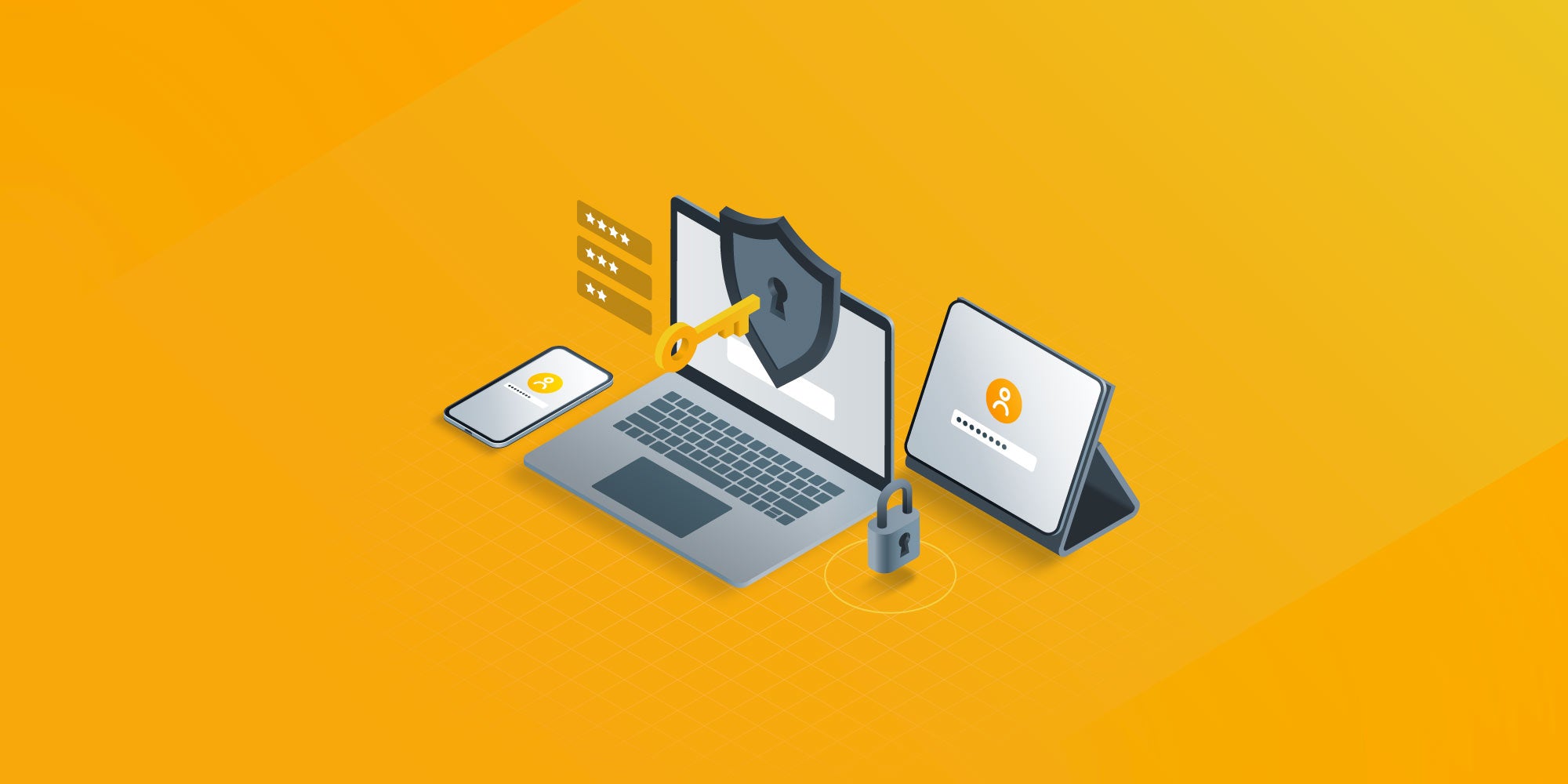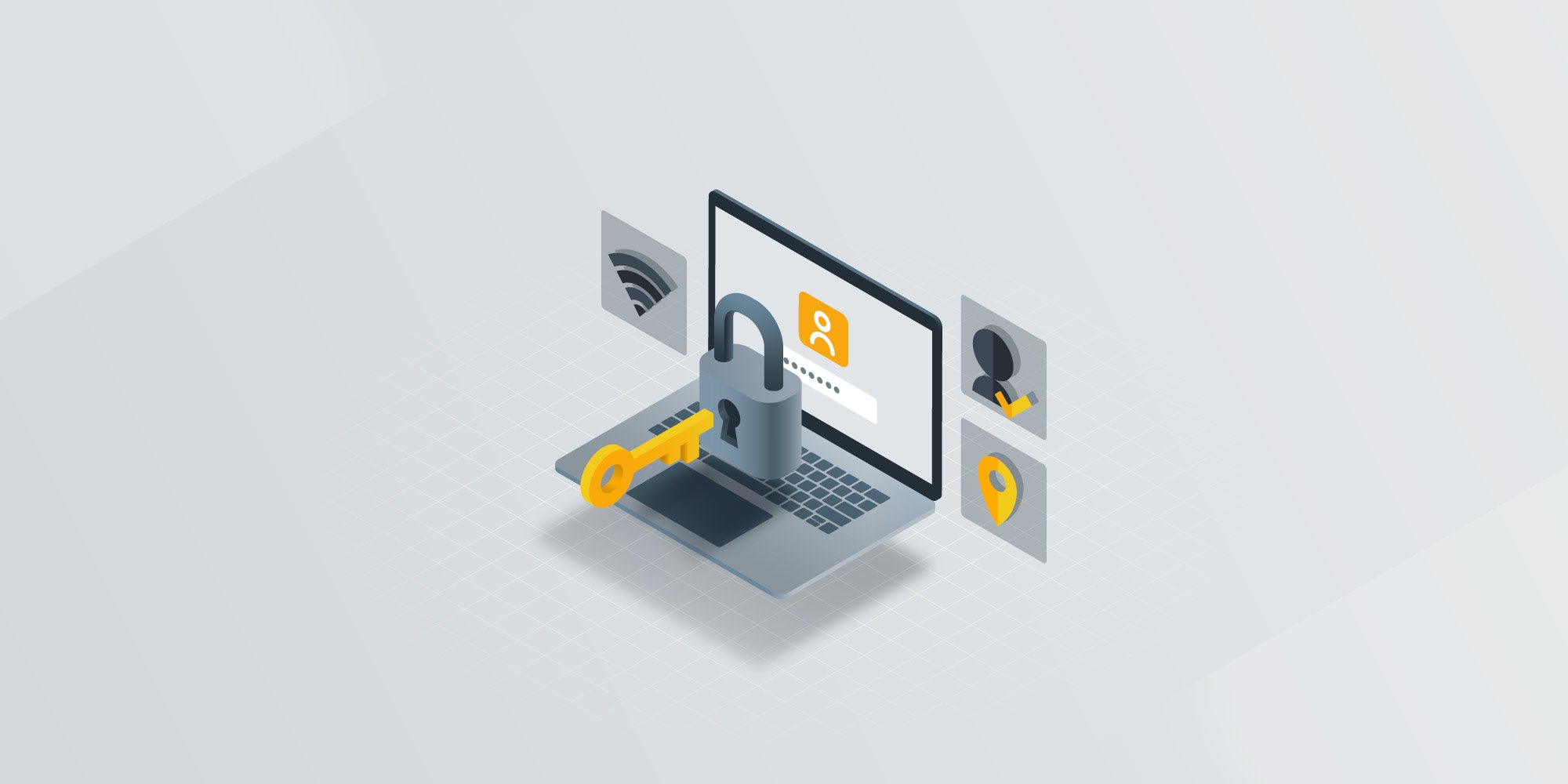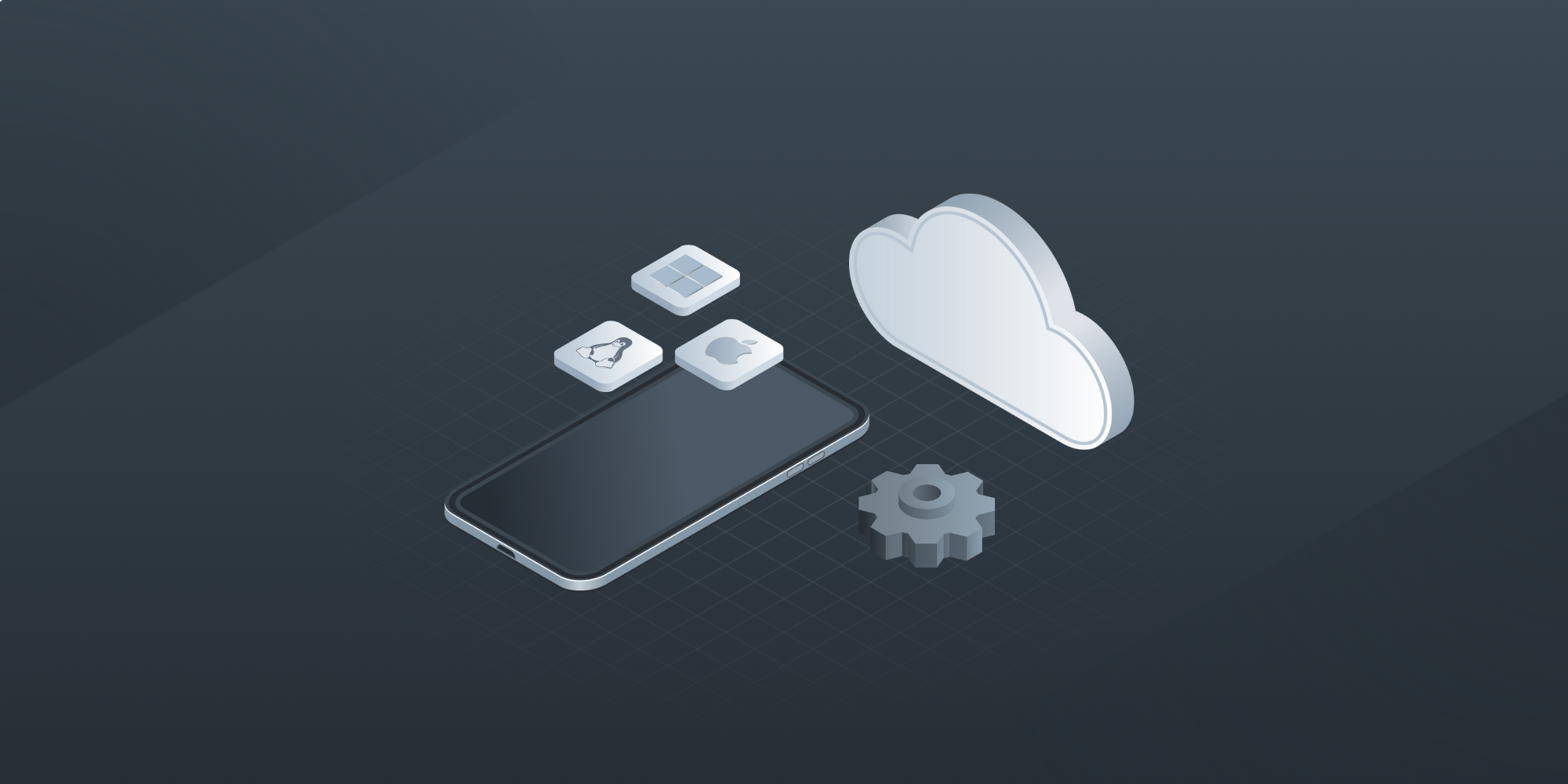Top 10 mobile device management (MDM) solutions for 2025
 GroWrk Team
GroWrk Team
Mobile Device Management (MDM) solutions are rapidly gaining traction with the global MDM market projected to reach $22 billion by 2027, growing at a CAGR of 26.1%. These solutions offer a range of benefits, including automated onboarding, mobile device manager, advanced security, and enhanced visibility into device usage and performance. Choosing the best mobile device management solution is vital for managing and securing your organization’s mobile devices.
This guide presents the top 10 MDM solutions for 2024, focusing on their key features and best use cases.
Best MDM solutions overview
.png?width=831&height=416&name=IT%20asset%20management%20checklist%20(1).png)
Here’s a quick overview of the best MDM solutions for 2025, each excelling in a specific area to meet diverse organizational needs:
- Best for global onboarding: GroWrk
- Best for secure access: IBM MaaS360
- Best for data separation: ManageEngine
- Best for Apple devices: Jamf Pro
- Best for Flexibility: Hexnode
- Best for endpoint management: NinjaOne
- Best for Android devices: AirDroid Business
- Best for Pricing: Kandji
- Best identity management and security solutions: JumpCloud
- Best for Windows Devices: Microsoft Intune
The following sections provide an in-depth look at each featured solution, highlighting their unique features, pros, cons, and ratings.
These reviews are based on extensive user feedback and personal experience, ensuring a comprehensive understanding of each solution's offerings.
GroWrk MDM - Automated onboarding, enhanced security, and improved visibility

Price:
-
Al carte plan: Pay only based on procurement, recovery, or disposal of your assets.
-
Premium plan: Pay a monthly fee based on the number of employees and a fixed price on all logistical movements.
Pros:
-
Centralized dashboard simplifying device management
-
Enhanced security with comprehensive policies
-
Application management ensuring security compliance
-
Real-time visibility into device status with inventory tracking
-
Regular updates based on user feedback
Cons:
-
Initial setup complexity
GrwWrk MDM software stands out for its robust security features and centralized management capabilities. The platform’s ability to implement comprehensive policies and manage devices remotely ensures that corporate data remains secure. Accurate device inventory tracking provides IT teams invaluable real-time visibility into device status.
Rating:
-
Price: 5/5
-
Design: 4/5
-
Functionality: 5/5
-
User Experience: 5/5
IBM MaaS360 - Secure access to company resources without requiring a VPN

Price:
Variable based on features
Pros:
-
Secure access without device-level VPN
-
Encrypted container for document access
-
Integration with systems like SharePoint and IBM Connections
-
Simplified workflows for accessing enterprise files
Cons:
-
Higher cost for advanced features
-
Limited customization options
IBM MaaS360 is a game-changer in secure access management, allowing mobile users to access corporate resources without needing a device-level VPN. The platform enhances security by providing encrypted containers for document access and device sharing, coupled with data leak prevention controls. While integrating with systems like SharePoint and IBM Connections simplifies workflows, the higher cost for advanced features and limited customization options can be a drawback in enterprise mobility management.
Rating:
-
Price: 3.5/5
-
Design: 4/5
-
Functionality: 5/5
-
User Experience: 4/5
ManageEngine - MDM focused on maintaining separation between personal and corporate data

Price:
Variable based on deployment size
Pros:
-
Separation of work and personal data
-
Remote device management of work-related aspects only
-
Secure access through a dedicated VPN
-
Data loss prevention policies
Cons:
-
Complex setup process
-
Limited support for non-corporate apps
ManageEngine’s focus on remote management and maintaining a clear separation between personal and corporate data makes it a standout choice for enterprises prioritizing user privacy and data security. The platform allows for remote control and management of only work-related aspects, ensuring that personal data remains untouched. It offers robust security management through features like secure access through a dedicated VPN for work applications and data loss prevention policies.
However, the complex setup process and limited support for non-corporate apps may pose challenges.
Rating:
-
Price: 4/5
-
Design: 3.5/5
-
Functionality: 4.5/5
-
User Experience: 4/5
Jamf Pro - designed specifically for managing Apple devices with strong customization options

Price:
$4 per device, per month; no user minimum
Pros:
-
Automated management of Apple devices
-
Strong customization with policies and scripts
-
Zero-touch deployment
-
Self-service feature for app management
Cons:
-
Higher cost for premium features
-
There is limited support available for devices that Apple does not make. This can affect the overall user experience for those using other brands.
Jamf Pro excels in managing iOS devices, offering automated management that enhances productivity and creativity. The platform’s strong customization options, including policies and scripts, allow for tailored and device security settings. With zero-touch deployment, hands-free provisioning of iOS devices becomes a breeze. The self-service feature acts like an enterprise app store, empowering users to manage their devices independently.
However, the higher cost for premium features and limited support for non-Apple devices are notable drawbacks.
Rating:
-
Price: 3.5/5
-
Design: 4.5/5
-
Functionality: 5/5
-
User Experience: 4.5/5
Hexnode: Best for Flexibility

Price:
Starts at $1 per device, per month
Pros:
-
Comprehensive support for multiple platforms including iOS, Android, Windows, and macOS
-
Advanced security features with real-time threat detection
-
Flexible deployment options: cloud-based and on-premises
-
User-friendly interface with customizable dashboards
Cons:
-
Limited advanced features in basic plans
-
Initial setup may require technical expertise
Hexnode is a versatile MDM solution that offers comprehensive support for a wide range of mobile devices and operating systems, making it ideal for organizations with diverse device fleets. It provides robust security features, including real-time threat detection and response, ensuring that corporate data remains protected across all devices. Hexnode's flexible deployment options, whether cloud-based or on-premises, cater to different organizational needs, while its user-friendly interface and customizable dashboards enhance the overall management experience.
However, the basic plans may lack some advanced features, and the initial setup might require technical expertise to fully leverage the platform's capabilities.
Rating:
-
Price: 4/5
-
Design: 4/5
-
Functionality: 4.5/5
-
User Experience: 4/5
NinjaOne - noted for its advanced capabilities in endpoint and patch management

Price:
Variable based on features
Pros:
-
Cloud-based patch management
-
Automated and ad-hoc scanning
-
Zero-touch automation for faster patching
-
Granular control over patch approvals
Cons:
-
Requires robust internet connectivity
-
The steep learning curve for advanced features
NinjaOne excels in endpoint and patch management, offering cloud-based solutions that can deploy patches to any endpoint with internet access. The platform supports both automated and ad-hoc scanning, significantly reducing vulnerabilities. With zero-touch automation, patching processes can become up to 90% faster. Granular control over patch approvals and the ability to block problematic patches ensure robust security management.
However, the need for robust internet connectivity and the steep learning curve for advanced features can be challenging.
Rating:
-
Price: 4/5
-
Design: 4/5
-
Functionality: 4.5/5
-
User Experience: 4/5
AirDroid Business - specializes in managing Android devices exclusively

Price:
Variable based on features
Pros:
-
Comprehensive remote access and control
-
User-friendly setup and operation
-
Device location tracking and app management
-
Cloud-based and on-premises deployment options
Cons:
-
You can only use this on Android devices. Other platforms are not supported.
-
Potential security risks with cloud deployment
AirDroid Business is tailored to manage Android devices, offering comprehensive remote device access and control. Clients highly appreciate the platform’s user-friendly setup and operational efficiency. It enables organizations to track device locations and manage app accessibility, tailoring app usage to specific needs. With both cloud-based and on-premises deployment options, AirDroid Business provides flexibility and control over data. However, its limitation to Android devices and potential security risks associated with cloud deployment are notable concerns.
Rating:
-
Price: 4/5
-
Design: 4.5/5
-
Functionality: 4/5
-
User Experience: 4/5
Kandji - Best for pricing

Price:
Starting at $1.60 per device/month
Pros:
-
Automated security and compliance
-
Zero-touch deployment for Apple devices
-
Extensive library of pre-built templates and scripts
-
Real-time monitoring and reporting
Cons:
-
Primarily focused on Apple devices
-
Higher cost for comprehensive features
Kandji stands out for its automation and security features, making it an ideal choice for organizations using Apple devices. Its zero-touch deployment simplifies device enrollment, while the extensive library of pre-built templates and scripts enhances security management. Real-time monitoring and reporting provide continuous visibility into device status and compliance.
However, its focus on Apple devices and the higher cost of comprehensive features may limit its appeal to organizations with diverse device fleets.
Rating:
-
Price: 3.5/5
-
Design: 4.5/5
-
Functionality: 5/5
-
User Experience: 4/5
JumpCloud - Best for identity management

Price:
Starts at $9 /user/mo billed annually or $11.00 billed monthly
Pros:
-
Cross-platform security management
-
Single sign-on and multi-factor authentication
-
Centralized user and device management
-
Integration with popular business tools
Cons:
-
Complexity in setup and configuration
-
Limited support for legacy systems
JumpCloud is a versatile MDM solution providing robust security across multiple platforms, including Windows, macOS, and Linux. With features like single sign-on and multi-factor authentication, it ensures secure access management. The centralized management console simplifies user and device administration, while integration with popular business tools enhances productivity.
However, the complexity of setup and configuration and limited support for legacy systems can be challenging for some organizations.
Rating:
-
Price: 4/5
-
Design: 4/5
-
Functionality: 4.5/5
-
User Experience: 4/5
Microsoft Intune - Best for Windows devices

Price:
Included with Microsoft 365 subscriptions
Pros:
-
Seamless integration with Microsoft services
-
Comprehensive device and app management
-
Built-in security and compliance tools
-
Support for multiple platforms
Cons:
-
Requires Microsoft ecosystem for full functionality
-
Can be complex for non-Microsoft users
Microsoft Intune excels in providing robust integration with Microsoft services, offering a comprehensive solution for device and app management. Its built-in security and compliance tools ensure corporate data protection, while support for multiple platforms enhances flexibility. Intune is particularly beneficial for organizations already using Microsoft 365, as it leverages existing infrastructure for seamless operation.
However, its reliance on the Microsoft ecosystem and complexity for non-Microsoft users might be a drawback for some.
Rating:
-
Price: 4.5/5
-
Design: 4/5
-
Functionality: 5/5
-
User Experience: 4/5
Key considerations for choosing an MDM solution

When selecting a full mobile device management software solution, several critical factors must be considered to ensure seamless integration with device restrictions and optimal performance.
1. Compatibility with operating systems
First and foremost, the MDM solution should be compatible with various operating systems, including Windows, iOS, and Android devices. This ensures the solution can be integrated into diverse enterprise environments without compatibility issues, allowing for unified endpoint management across all devices.
2. Robust security features
Strong security features are essential for protecting corporate data and preventing security incidents. Look for solutions that offer comprehensive security controls, such security tools such as multi-factor authentication, data encryption, and policy management, to safeguard against potential threats and maintain a strong security posture.
3. Ease of deployment and user interface
Ease of deployment and a user-friendly interface significantly enhance the user experience. A well-designed MDM platform simplifies the management console, making it easier for IT teams to manage mobile devices efficiently. Look for solutions with customizable user interfaces allowing intuitive navigation and streamlined mobile device management and configuration.
4. Total cost of ownership
Lastly, consider the total cost of ownership, including the initial expenditure and ongoing support and integration costs with existing systems. Evaluate the pricing structures of different MDM solutions to ensure you get the best value for your investment, considering both immediate and long-term financial implications.
By carefully evaluating these key considerations, organizations can select a mobile device management software solution that aligns with their specific needs and enhances their security management strategy.
Evaluating features and scalability

Evaluating the features and scalability of an MDM solution is essential for long-term success. Many modern MDM platforms incorporate AI tools to analyze device behavior and detect anomalies, enhancing security and operational efficiency.
Key features to look for include unified endpoint management, zero trust security, and user-centric management, ensuring the solution meets evolving organizational needs.
The scalability of an MDM solution is also critical. Solutions employing declarative device management processes allow multiple devices to apply settings and report statuses without constant polling, improving performance and scalability.
Additionally, features like remote troubleshooting and monitoring device health prevent vulnerabilities and ensure optimal device performance reducing device downtime, particularly in the context of mobile device management MDM software solutions.
Making the final decision
When it comes to making the final decision, several factors must be considered.
-
Evaluate vendor support and training, as MDM is critical for organizational operations.
-
Researching the pricing structures and support options of different MDM solutions is also necessary to ensure you get the best value for your investment.
-
Consider the long-term value of the solution, including potential cost savings and efficiency gains.
Solutions like GroWrk, which offer unified management for Apple devices, can significantly enhance productivity and creativity, making them a worthy investment. Comprehensive research and informed decision-making are key to selecting the best MDM solution for your organization.
Wrapping up
Mobile device management solutions are crucial for any organization to streamline their device management processes, bolster security, and enhance productivity. This guide has explored the top MDM solutions for 2025, each offering unique features to cater to different organizational needs. From GrwWrk MDM’s automated onboarding and visibility to IBM MaaS360’s secure access without a VPN, each best mobile device management solution provides distinct advantages.
Choosing the right MDM solution involves carefully considering your organization’s specific needs, compatibility requirements, and long-term goals. By evaluating key features, scalability, and vendor support, you can make an informed decision that will position your organization for success in the ever-evolving digital landscape.
Streamline your MDM with GroWrk’s automated onboarding, advanced security features, and real-time visibility. Empower your IT team to efficiently manage devices globally while ensuring top-tier compliance and security.
Discover how GroWrk can transform your device management—book a demo today!
Frequently asked questions
What is the main benefit of using GrwWrk MDM?
The main benefit of using GrwWrk MDM is its ability to automate onboarding and device downtime, enhance security, and improve visibility for managing devices across different operating systems.
How does MDM work?
MDM solutions typically work by enrolling devices into a management platform. Once enrolled, devices can be remotely configured, monitored, and controlled. MDM agents, which are software components installed on devices, communicate with the MDM server to make windows devices receive and execute commands.
What are the key considerations when choosing an MDM solution?
When choosing an MDM solution, it is crucial to consider compatibility with multiple operating systems, security features, ease of deployment, and total cost of ownership. Prioritizing these factors will ensure a suitable and effective solution for your organization.
What are the challenges of implementing Mobile Device Management?
-
User Resistance: Some users may resist MDM policies due to perceived restrictions on their device usage.
-
Complexity: MDM solutions can be complex to configure and manage, especially for large organizations.
-
Compatibility Issues: Ensuring compatibility with different device models and operating systems can be challenging.
Can MDM be used to monitor device screen activity?
While MDM primarily focuses on device management and security, some advanced MDM software may offer features to monitor device screen activity, such as screen recording or usage analytics. However, the specific capabilities and legal implications of such monitoring should be carefully considered.
What are the challenges associated with device enrollment?
Some common challenges related to device enrollment include:
-
User Resistance: Users may be reluctant to enroll their devices due to privacy concerns or inconvenience.
-
Technical Difficulties: Issues with network connectivity, device compatibility, or MDM agent installation can hinder enrollment.
-
Security Risks: Improper enrollment procedures can leave devices vulnerable to security threats.






